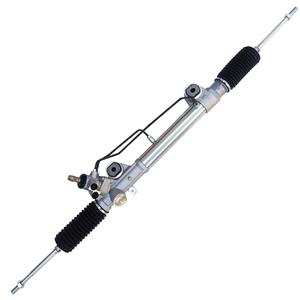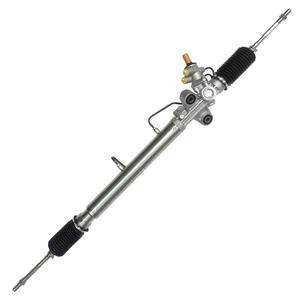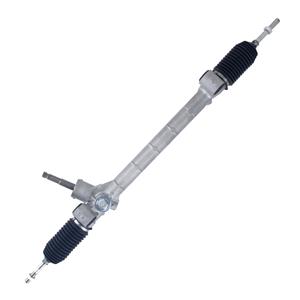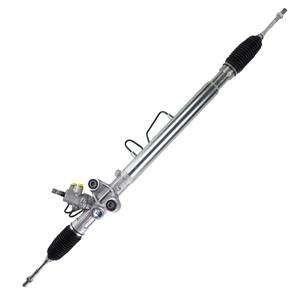Power Steering Pump - Everything You Need to Know
In modern cars, the power steering system is a key component that ensures that drivers can easily and safely control the vehicle. The power steering pump is the heart of this system. Whether it is the moment of turning the steering wheel or the sense of ease you feel when turning at low speed, the power steering pump is working silently behind it.
This article will explore the working principle of the power steering pump, common problems, and its replacement and diagnosis methods to provide you with a comprehensive understanding.
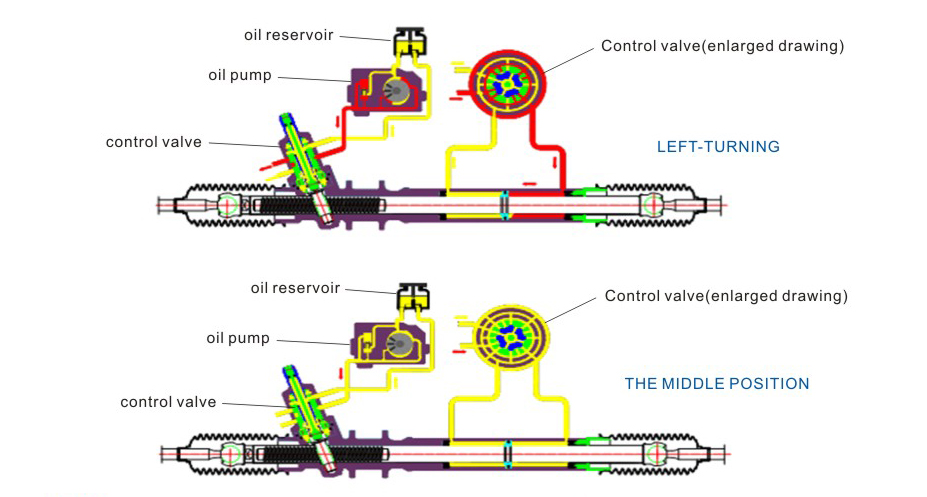
What is a power steering pump?
The power steering pump is an important component in the power steering system of a car. Its main function is to provide power assistance through the hydraulic system, allowing the driver to turn the steering wheel more easily. In other words, the power steering pump is responsible for converting the mechanical energy of the engine into hydraulic energy, thereby reducing the force required for steering.
Without a power steering system, the driver needs to apply a large force to turn the steering wheel, especially at low speed or at rest. This steering operation can become very strenuous. The power steering pump greatly reduces the difficulty of the driver's operation by providing hydraulic power assistance, making driving easier and more comfortable.
How does a power steering pump work?
The power steering pump is usually driven by the engine through a belt. When the engine is running, the belt drives the rotor of the power steering pump to rotate. As the rotor rotates, the hydraulic oil inside the pump is sucked into the pump chamber and then delivered to the steering rack or gear mechanism through pressurization. When the driver turns the steering wheel, the hydraulic system pushes the pressurized hydraulic oil into the corresponding oil cylinder to generate power, making the steering rack or gear mechanism easier to turn, thereby reducing the driver's operating burden.
There is also a pressure regulating device inside the power steering pump, which can adjust the pressure of the hydraulic oil according to the driver's operating needs. For example, at low speed or stationary state, the system will provide greater power assistance; at high speed, the system will reduce the power assistance to ensure the stability and control feel of the steering wheel. After completing the steering operation, the excess hydraulic oil returns to the power steering pump through the return line for recycling. This process not only improves the efficiency of the hydraulic system, but also avoids the waste of hydraulic oil.
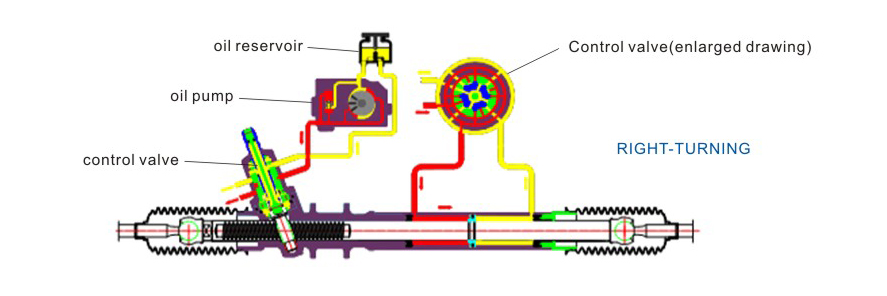
What symptoms will a power steering pump failure cause?
1. Steering wheel becomes heavy
2. Steering wheel makes unusual noises
3. Hydraulic fluid leaks
4. Insufficient power assist or intermittent failure
Heavy steering wheel - When there is a problem with the power steering pump, the most obvious symptom is that the steering wheel becomes heavy, especially at low speeds or when parking. This is because the pump cannot provide enough hydraulic assistance, causing the driver to apply more force to turn the steering wheel.
Steering wheel noises - If you hear unusual noises when turning the steering wheel, such as sharp squeaking or low clicking sounds, this may be a sign of wear on the internal parts of the power steering pump or air in the hydraulic system. These noises usually occur when the vehicle is stationary or turning at low speed, especially during the process of turning the steering wheel.
Hydraulic fluid leaks - A faulty power steering pump may also cause hydraulic fluid leaks. Hydraulic fluid leaks usually form oil stains under the vehicle or near the power steering pump, resulting in a decrease in the amount of oil in the hydraulic system, which affects the normal operation of the steering system. Long-term hydraulic fluid leakage not only affects the steering assistance, but may also cause damage to other engine components.
Insufficient or intermittent failure - Sometimes, the power steering pump may experience insufficient assistance, meaning that the steering system cannot provide stable hydraulic assistance. The driver may feel that the steering wheel is light and heavy, especially when driving at low speeds or parking. This intermittent loss of assistance is usually caused by wear or oil blockage inside the hydraulic pump.
Can I still drive if the power steering pump fails?
If the power steering pump only has a slight loss of assistance, the driver may feel that the steering wheel has become heavier, but the vehicle can still be controlled. In this case, although the driving experience will be affected, the vehicle can still be driven safely. However, it is necessary to arrange repairs as soon as possible to avoid further deterioration of the fault.
However, if the power steering pump completely loses assistance, the driver will need to rely on full force to turn the steering wheel, especially at low speeds or parking, which can become very dangerous. Although the vehicle can still be driven, the difficulty in steering greatly increases the risk of driving, especially in an emergency. Therefore, when a serious power failure occurs, it is recommended to avoid driving as much as possible and repair it as soon as possible.
In addition, if the power steering pump has a hydraulic fluid leak and the amount of hydraulic fluid has been significantly reduced, continuing to drive may cause further damage to the pump and complete failure of the steering system. In addition, hydraulic fluid leakage may also affect other vehicle components, such as the engine cooling system or brake system. Therefore, when hydraulic fluid leaks, it is recommended to stop the vehicle immediately and conduct an inspection or tow repair.
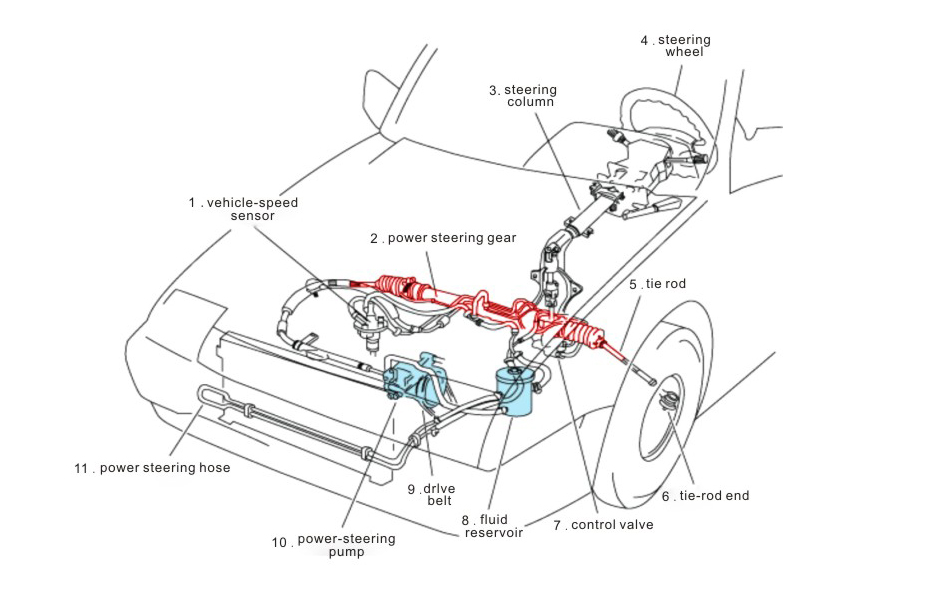
How often does the power steering pump need to be replaced?
There is no fixed standard for the replacement cycle of the power steering pump, because its service life depends on many factors, including the frequency of use of the vehicle, the driving environment, and the maintenance status. Generally speaking, the life of the power steering pump is roughly between 50,000 and 100,000 miles (about 80,000 to 160,000 kilometers). However, this is only a rough estimate and the actual situation may be different.
The wear rate of the power steering pump is closely related to the frequency of use and driving conditions of the vehicle. Vehicles that often drive in the city will wear out the power steering pump faster than vehicles that travel long distances on the highway due to frequent steering operations. Especially in harsh road conditions, such as mountain roads or rugged roads, the steering system is under greater load, so the life of the power steering pump may be shortened. Although there is no clear replacement cycle for the power steering pump, if you find that your vehicle has the aforementioned symptoms, such as a heavy steering wheel, unusual noises, or hydraulic fluid leaks, you may need to consider replacing the power steering pump. In addition, when replacing the pump, it is best to use parts that match the original factory specifications to ensure the normal operation of the system.
How to diagnose a power steering pump problem?
First, check the hydraulic fluid level in the power steering system. If the hydraulic fluid level is too low, it may cause insufficient power assistance or abnormal operation of the pump. The color and smell of the hydraulic fluid can also provide important clues. Normal hydraulic fluid should be clear and odorless. If the hydraulic fluid turns black or has a burnt smell, it may indicate that there is a problem inside the pump. Secondly, when the power steering pump fails, it usually makes an unusual sound. By listening to the sound of the steering wheel turning when stationary or driving at different steering angles, you can preliminarily determine whether the pump is working properly. A sharp squeak or a low hum usually means that there is a problem with the internal components of the pump.
In addition, check for hydraulic fluid leaks. Hydraulic fluid leakage is one of the common symptoms of a power steering pump failure. Leakage can be determined by checking the pump, hydraulic lines and joints for oil stains. If a leak is found, the relevant seals or the pump itself may need to be replaced.
The power steering system can also be tested by turning the steering wheel several times when the vehicle is stationary. If the steering wheel is not sufficiently assisted or is difficult to turn at certain angles, it may mean that the pump is not delivering enough pressure or there is an air blockage in the system.
How to replace the power steering pump?
First, make sure the vehicle is in a safe position and raise it with a jack. Disconnect the negative terminal of the battery to avoid accidental starting, and then prepare the required tools and the new pump. Before replacing the pump, the hydraulic oil in the power steering system needs to be drained. By opening the joint of the hydraulic line, the hydraulic oil can flow out naturally. It is recommended to use a container to catch the flowing hydraulic oil to prevent environmental pollution.
Secondly, use a wrench or socket tool to remove the fixing bolts of the old pump and disconnect the pump from the hydraulic line. Be careful to avoid damaging the hydraulic line and other related parts during the removal process. Then install the new pump in the same position and direction as the old pump and tighten the fixing bolts. When connecting the hydraulic lines, make sure all joints are secure and leak-free.
After installation, refill the power steering system with the appropriate amount of hydraulic oil. Start the engine and turn the steering wheel a few times to check the hydraulic oil level and refill to the appropriate level, while observing for any leaks or abnormal noises. Finally, after all operations are completed, test the working effect of the power steering system. Make sure that the steering wheel turns smoothly at all angles without abnormal noises or insufficient power assistance.
What should I pay attention to when dealing with power steering pump problems?
Safety comes first when dealing with power steering pump problems. When performing any operations related to the power steering pump, make sure the vehicle is in a safe state, such as supporting the vehicle with a jack, disconnecting the battery, etc. In addition, when handling hydraulic oil, avoid contact with skin or eyes, as hydraulic oil may contain harmful substances.
Secondly, when replacing the power steering pump or related components, it is recommended to use original parts or parts that meet the original specifications. Using inappropriate parts may cause system mismatch, which will affect the normal operation of the vehicle. In addition, after replacing the pump or other operations, be sure to check the integrity of the entire hydraulic system to ensure that there are no oil leaks, looseness or other problems. Any problems with the hydraulic system will directly affect the vehicle's handling and may even cause safety hazards.

Can I replace the power steering pump myself?
Although the replacement of the power steering pump seems to be a relatively simple mechanical operation, the actual process involves the handling of the hydraulic system, and a little carelessness may cause system failure or safety hazards. Therefore, whether you can replace the power steering pump yourself needs to be judged based on your personal hands-on ability and experience.
If you have strong mechanical hands-on ability and have certain car maintenance experience, it is feasible to replace the power steering pump yourself with reference to relevant tutorials or maintenance manuals. However, for those who have no mechanical maintenance experience, it is recommended to leave it to a professional technician to ensure the correctness and safety of the operation. Replacing the power steering pump requires specific tools, such as wrenches, sockets, hydraulic oil, etc. If you don't have these tools or are not familiar with how to use them, it is best not to try rashly.
In addition, there are certain risks in replacing the power steering pump by yourself. For example, improper installation may cause hydraulic oil leakage, or failure to properly remove the air in the system will affect the normal operation of the power steering system. Therefore, although self-replacement can save some costs, it still needs to be carefully evaluated in terms of safety and performance.
I hope this article can help you fully understand the working principle, common problems and treatment methods of the power steering pump, so as to better ensure your driving safety.

